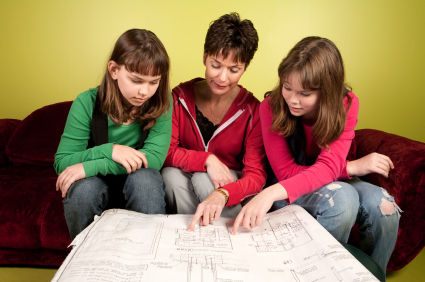
Every kid wants to enjoy the fun of going house-to-house with friends in the dark trick-or-treating on Halloween night. Many of us parents remember the sheer joy of running through the neighborhood in the dark with friends collecting ungodly amounts of candy. Back then, our parents sent us out the door and let us go. Sure, they worried about urban-legend-inspired razor blades in apples, but didn’t worry as much about stranger danger as we do today or reputation damaging photos on social media.
Related: Protecting Kids from Stranger Danger
Today, things are a bit different. Sending our kids off into the the dark isn’t something we are all comfortable with. And while many neighborhoods around the country have designated trick-or-treating events to keep children and families safe, sometimes that is not enough to reassure parents worried about sending kids off to trick or treat with friends or to attend a Halloween party.
Halloween Safety Tips for Parents and Children to Help Keep Your Family Safe
- Make sure costumes are safe. Kids don’t want to be restricted in how they wear their costume, but tell your children that there are some common sense rules they should follow. For example, make sure they keep their faces exposed so they can breathe and that their costumes don’t cover their eyes. Discourage them from wearing full masks when trick-or-treating in the dark. Of course, flame-retardant costumes are a must to prevent fire accidents and be sure it’s the right size so they don’t trip over it.
- Increase visibility. Make sure your child wears bright clothing or even small reflectors. No one wants to worry about their child being hit by a car if they aren’t able to be seen. Encourage younger children especially to choose light-colored costumes. Give them glow sticks and flashlights to carry with them so they can be seen by drivers.
- Travel in groups. Older kids are going to want to trick-or-treat on their own, without a parent. If they do, make sure they go with at least one friend, preferably more.
- Monitor social media. Remind your children to think about the consequences of a picture before it’s posted or messaged to anyone. Halloween is a high traffic time for photo sharing. Monitor your kids being tagged, or comments being made about their spooktakular attire. The MamaBear App can help you monitor your child’s social safety.
- Track your child’s location. Install a family safety app like MamaBear on every family member’s smartphone so you can monitor your children’s whereabouts. The app allows your children to check in with an emoticon to share where they are and how they’re feeling. Children can also request rides from parents or send SOS messages if they are in trouble. Alerts can let you know if your child has indeed made it to that Halloween party and when they leave.
See Also: Halloween and Safety Tips from the US Center for Disease Control and Prevention
Thankfully, parents have resources today to keep their families safe during the free-for-all that Halloween night can be. Reminding your kids of these safety measures and monitoring their location and social activity provides peace of mind while allowing your children to enjoy all the candy, haunted houses and other Halloween fun we loved when we were kids.
For more child safety tips visit the MamaBear blog or follow us on Facebook.
Image Credit: Kids Activity Blog
 Did you know that October is National Cyber Security Awareness Month? The month is a time for educating the community – especially families – about cyber security and internet safety.
Did you know that October is National Cyber Security Awareness Month? The month is a time for educating the community – especially families – about cyber security and internet safety.
